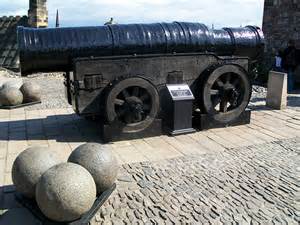European Alliances
Main Players in the Early Years
Chapter 1: Kingdom to Nation
In Europe, throughout the Middle Ages, there had been little concept of nationhood. Men did not fight wars for the concept of France, Scotland or England; they fought for their immediate lord, who then fought for his lord, and so on up to the king, who was the embodiment of the polity. If your immediate lord led you in a war against his lord, or the king, that was not your fault, you just did as you were told. Even the general use of the word "Kingdom", in many European languages, rather than "country" or "state" shows the underlying conception of the entity.
Borders were fluid, as the extent of territories ruled by an individual might well fluctuate between successive rulers of the same dynasty, owing to inheritance laws, or the outcome of wars of conquest. Thus, where Scotland ended and England began was not always clear, although Britain had clearer boundaries than most of the European states. Alliances were made between individuals and families, often encapsulated in marriage.
By the end of the sixteenth century, things had changed radically, with the birth of the idea of the nation state – a single polity, within a fixed boundary, to which all its subjects owed allegiance. In a sense, the Civil War of the 17 th century was the final clash between loyalty to King versus loyalty to country.
This sea change in the perception of what constituted a country came about partially as a result of technological change.

The development of gunpowder into a more controllable product than it had been in the early years of the fifteenth century changed the nature of warfare. The use of artillery made war far more expensive – so expensive that it was hard for anyone except kings commanding taxation to indulge in it. This centralised power in the hands of a single monarch.
In the medieval world, although kings were the single most powerful individuals in the kingdom, they were perceived by their nobles, if not exactly as first amongst equals, as holding the Crown by their consent. Hence tyrannical kings, such as Richard II, or weak kings such as Henry VI in England, or kings who managed to be both pettily tyrannical and weak, such as James III in Scotland, could be overthrown and replaced by another member of either his immediate family, or the noble with the most clout.
By the 1570s, the emerging State of the Netherlands did not just want to depose its hated king, but to break away completely from being a part of one man's territory to become an independent state that could choose its own ruler.
